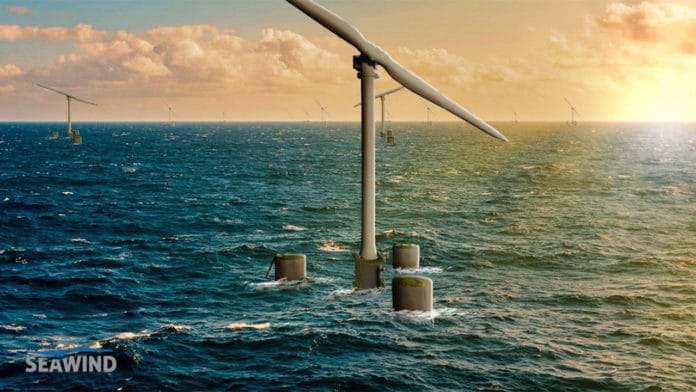British energy service provider Petrofac has signed a Memorandum of Understanding (MOU) with a Netherlands-based Seawind Ocean Technology to deploy Seawind’s first 6.2MW floating offshore wind turbine demonstrator in European waters. Through the MOU, Petrofac will help in the installation, assembly, and maintenance of the floating offshore wind turbines.
Seawind has developed proprietary two-bladed floating wind turbines integrated with a unique concrete floating structure that they claim is suitable for installation in all seas, including cyclonic regions and ultra-deep waters. Seawind’s twin-blade turbines can last up to 50 years and can be placed in these adverse conditions with little maintenance requirements.
Called the 6-126 turbine, the two-bladed machine comes with a teetering hinge that separates the shaft and rotor, protecting the turbine from harmful and heavy loads. It also offers higher speeds as made possible by an active yaw control. The turbines are assembled in a harbor using land-based cranes, and no installation vessels are required.
The 6-126 turbine has a rated capacity of 6.2 MW, and its 126-meter-diameter rotors reach a speed of 20.8 rpm. The tip speed is 137 meters per second while the operating wind speed can go 3.5-25 m/s (12.5-90 km/h) and can withstand cyclones up to 70 m/s (250 km/h) with 90 m/s (325 km/h) gusts.
“Petrofac assures delivery for its clients through innovation and technology, with proven results,” said Vincent Dewulf, CEO of Seawind Ocean Technology. “Seawind has developed a unique patented technology that deploys the teetering hinge two-blade wind turbine technology, which has many benefits for offshore application. Assembly of the complete system is made in a harbor with land-based cranes; no installation vessels are required for installation at sea.”
The offshore wind turbines are to be installed in European waters by the first quarter of 2024 and, following initial testing, will also be used on a larger scale.
